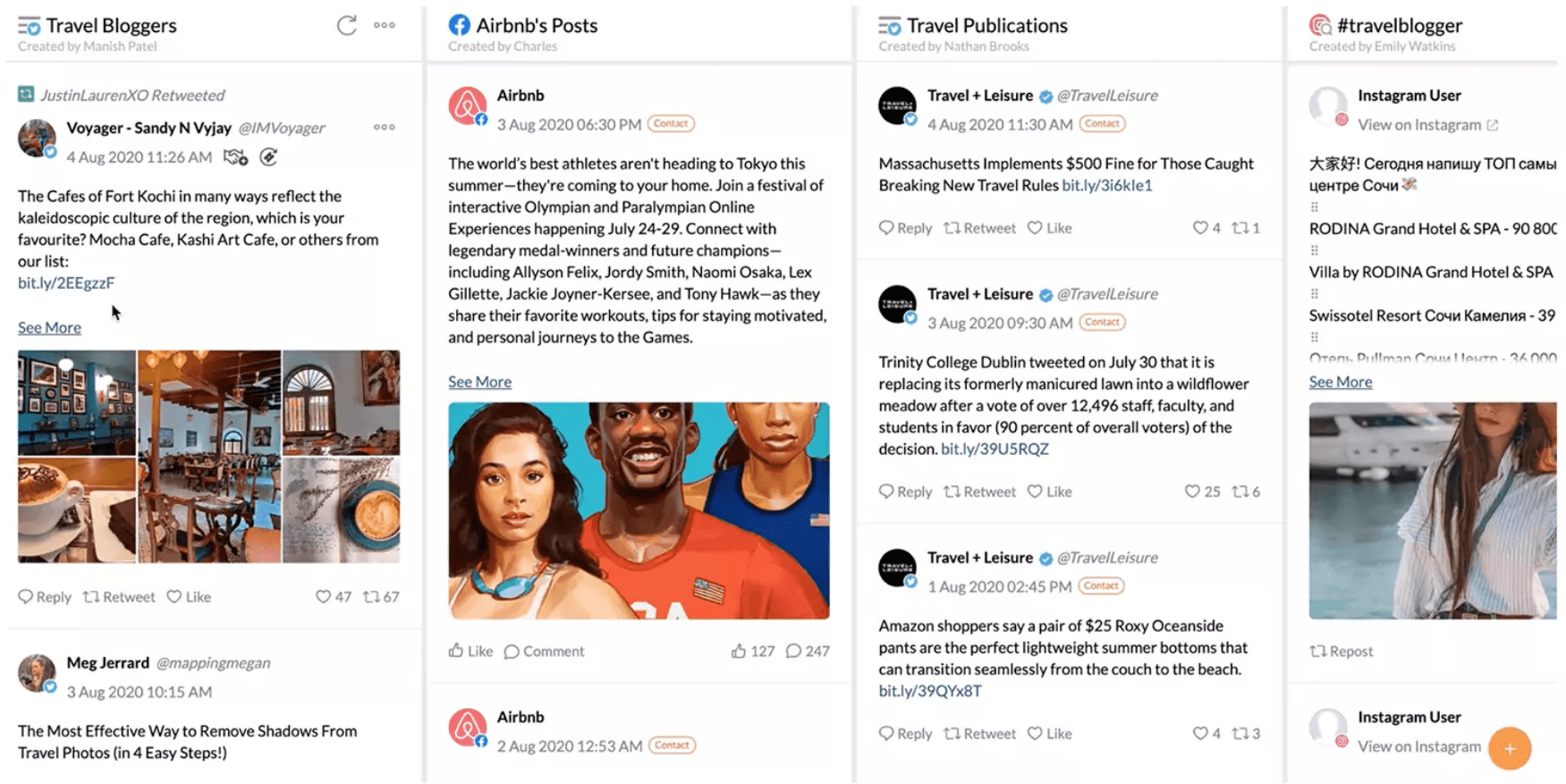Staying ahead in the market using competitor analysis
- Last Updated : July 10, 2025
- 3.6K Views
- 5 Min Read

Staying ahead of the social media curve is similar to winning a race. Having the best gear, like an aerodynamic shoe, will only get you so far. To gain a real advantage, you need precision focus combined with keen insight into your competitor's strategy.
In the social media space, High-ROI campaigns and viral trends can be exhilarating but also short-lived if you aren't aware of what your competition is doing. If you get complacent about your social media achievements, you'll soon find that both social media ads and aerodynamic shoes aren't that different after all—both can quickly become pointless investments if you don't stay sharp and keep an eye on the competition. Doing this is what we call in industry terms Competitor Analysis.
What is competitor analysis?
We can define competitor analysis as the process of analyzing your brand's strengths and weaknesses against both your immediate competitor's and the giants in your industry. This is done to understand your position in the market and how you measure up against your industry peers.
And no, this doesn't mean that competitor analysis entails anything shady like rifling through anyone's web files or engaging in grey hat marketing. Because let's face it—it's always better to approach your strategy authentically and straight on. Half of marketing is staying authentic and the other half is staying sharp.
For brands that are relatively new to having an online presence, monitoring your industry peers and understanding how they use social media is elementary. This insight will give you an edge when it comes to meeting the industry's digital demands.
Everything available about your brand and your competitors' strengths, weaknesses, worst mistakes, and best opportunities is data and a valuable asset you can use to make data-driven decisions. With it, you'll be able to conduct A/B testing experiments, tweak your campaigns, and try to optimize and implement different strategies.
Observing your competitors
Let's look at why it's paramount to be aware of your competitors' tactics and strategies.
Stand out from the competition
How your competitors position themselves can help you identify a different tangent that will help you distinguish yourself. If you're slogging away to perfect a strategy that your competitor is nailing, it's essential that you observe what they're doing different to see what you could do better.
Example: MoonPie is a popular American confection brand. They stand out on social media through their quirky audience engagement and witty marketing campaigns. Their social managers prioritize having fun with their audience over straightforward sales tactics. By adding a human touch to their brand voice, they come off as cool and memorable. The next time someone is shopping for snacks, they'll associate the cleverness of the social media account with the brand and choose MoonPie over other snacks, even though that social media voice has zero impact on whether their product actually tastes better. Below is a sample of their funny and creative audience engagement. MoonPie was quick enough to play off a pop culture event to draw attention to their own product.

Turn your competitor's weakness into your strength
What your competitors lack in terms of business offering or strategy can be an area of opportunity for you. Identifying a competitor's weakness can help you gauge the edge you have over them.
Example: Say a competitor brand lacks a feature that you offer and that has decent demand in the market. Be sure to highlight this feature in your marketing so you can poach any of your competitors' customers who really want or need that feature.
Identifying your competition's content marketing strategy
Watching what your competitor is doing can help you take a deep-rooted approach to decoding and understanding their marketing plan. If you see your competitor's blog or social media channels gaining a lot of traction with some blog posts on a topic you haven't thought about at all—or at least from another perspective—you should start monitoring their content to get a hang of how they are using it and start analyzing what's working for them. Things to track can include the frequency of their content being shared or the branded hashtag being picked up by the audience and how they are engaging with your competitor.
Another important method to follow is finding SEO backlinks. There are lot of SEO sleuthing tools to monitor competitors' websites that keep you informed on what content is gaining backlinks. This can help you ideate and create your own content marketing strategy. SEO sleuthing tools help you compare your SEO site structure to your competitors so you can analyze how well they rank and what keywords they are ranking for.
Making your competitor irrelevant (metaphorically speaking!)
Many brands only analyze their immediate competitors to understand where they can edge them out. Instead of focusing only on your immediate competitors, get an edge by thinking ahead to expand your research and benchmark your performance against your entire region and industry.
In other words, instead of offering the same service and same solution as your competitor, make your audience imagine something better that only you can offer. Standing out with a better value-offering is key.
Example: Spotify saw a void in the market for music streaming and podcasts because Apple Music is not affordable for everyone and was exclusive to only Apple device owners, cutting out a large chunk of potential audience. Consumers didn't anticipate that Spotify would surpass Apple with over 12 million active users in August 2012 (after launching in July 2011 in the U.S.). They were able to achieve this by having a greater vision. Rather than match the pay-per-album model that Apple had created, Spotify introduced an overall tailor-made subscription model that covered all sections of music listeners and was inclusive of all devices.
Their strong understanding of the market landscape, combined with their quirky marketing tone, captivated many users. This was perhaps the pivotal reason for them becoming market leaders in the music streaming space in no time. A lot of smaller players copied their business model, but Spotify was always ahead by introducing personalized music, tailor-made plans for users, and even daily and weekly subscriptions plans that cost just a few cents. Spotify's focus was to cover as many regions and users as they could, which—combined with their powerful and contextual marketing campaigns—is what helped them stay ahead.
Monitoring your competition on social media platforms
Once you discover which social media platforms work best in your niche, monitoring your competition on these platforms is crucial. It helps to make social media monitoring a part of your routine.
Why it's important:
Understanding what works for your competitors, what doesn't, and gauging audience engagement for the types of content they put out can help equip you with a better understanding of two things:
Your potential audience
Your overall social strategy
Over time, analyzing your competitor's conversation and activity can help you understand where your business advantage lies and what kind of campaigns can work for you.
With tools like Zoho Social, you can set up monitoring columns to track social media activities of your competitors such as their updates and even their branded keywords and hashtags.

Closing thoughts
So now we have an idea of how to change the context of your brand messaging with your competition in mind. Competitor analysis is just an initial phase of your brand building strategy, but to be a market leader and stand out among the pack, you need to think ahead with a brand vision in mind.
Drop your comments below and let's get conversational!
 Ashwin
AshwinMarketer by day and writer/poet by night! I get the dopamine rush when my thoughts are put down as words or poems. A person with big time OCD (Obsessive Cinema Disorder).



Comments(1)
Hey Ashwin, Your post is very helpful and informative. competitor analysis as the process of analyzing r brand's strengths and weaknesses against both our immediate competitor's and the giants in our industry. Thank you for sharing this Post, Sweety